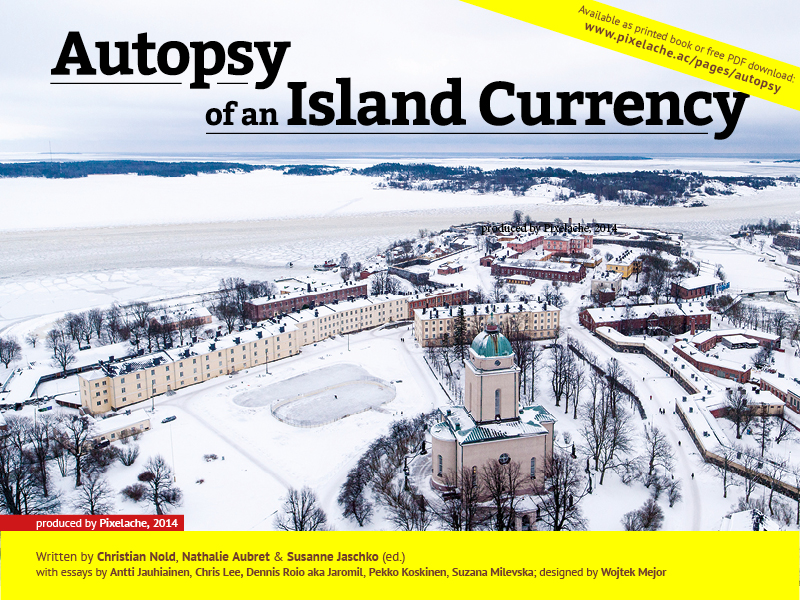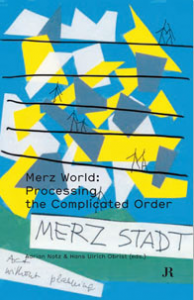 prozessagenten nehmen an dem öffentlichen Wettbewerb ‘Aspekte der Gestaltung und des Designs im öffentlichen Raum’, ausgerufen von der Stadt München, teil. Wir schlagen vor, den Raum der Isar, der heute in erster Linie als Erholungsraum und zur Energiegewinnung dient, auf sein Potenzial als Ort des Wissenstransfers, der Inspiration und Veränderung zu untersuchen. Wir haben ein Projekt konzipiert, das konkret die Gestaltung des innerstädtischen Lebensraums Isar thematisiert, mehr noch, das Möglichkeiten der aktiven Teilnahme an der Gestaltung dieses öffentlichen Raumes bietet. Wir stellen nicht die rein visuelle Gestaltung in den Vordergrund, sondern haben ein Szenario für eine tiefgreifende, nachhaltige Gestaltung entwickelt. Hier bietet wir Einblick in unser Konzept:
prozessagenten nehmen an dem öffentlichen Wettbewerb ‘Aspekte der Gestaltung und des Designs im öffentlichen Raum’, ausgerufen von der Stadt München, teil. Wir schlagen vor, den Raum der Isar, der heute in erster Linie als Erholungsraum und zur Energiegewinnung dient, auf sein Potenzial als Ort des Wissenstransfers, der Inspiration und Veränderung zu untersuchen. Wir haben ein Projekt konzipiert, das konkret die Gestaltung des innerstädtischen Lebensraums Isar thematisiert, mehr noch, das Möglichkeiten der aktiven Teilnahme an der Gestaltung dieses öffentlichen Raumes bietet. Wir stellen nicht die rein visuelle Gestaltung in den Vordergrund, sondern haben ein Szenario für eine tiefgreifende, nachhaltige Gestaltung entwickelt. Hier bietet wir Einblick in unser Konzept:
Flüsse sind kein klassischer Raum für die Ausstellung und Ansiedlung von Kunst und Design, werden aber immer häufiger zur Präsentation von Kunst genutzt. Beispiele hierfür sind ‘Drift’ auf und an der Londoner Themse oder ‘Emscherkunst.2010’.
Flüsse sind kulturhistorisch aufgeladene Orte. In der Vergangenheit waren sie die Lebensadern der Städte, bildeten wichtige Transport- und Handelswege und damit auch Orte des sozialen Lebens, des KulturtransÂportes und -austausches von einer Region zur nächsten. Flüsse sind damit aus historischer Sicht Informationskanäle, in denen Wissen von einem Ort zum nächsten fließt. Heute sind viele Flüsse, wie auch die Isar, durch menschliche Eingriffe wie das Einbringen von Stauanlagen, Flusslaufbegradigungen oder Kanalbau nicht mehr schiffbar. Diese Wasserwege haben damit ihre einstige Funktion als Teil eines nationale Grenzen überschreitendes kulturellen Netzes, in dem Information frei fließt, verloren. Trotzdem fließt in jedem Fluss natürlicher Weise Information: Das Wasser ist das Medium, der Datenträger sozusagen: Seine stoffliche Zusammensetzung, Fließgeschwindigkeit, Temperatur, sein Volumen und Fischbestand ist abhängig von dem, was sich anderenorts ereignet. Der Fluss ist damit ein von Experten und Laien lesbares, ständig in Veränderung befindliches, also prozessuales Medium.
Hier setzt unser Konzept an: Die Isar, selbst von prozessualer Natur, wird zum Ausgangspunkt für ein künstlerisches Projekt, das im Herbst 2012 an oder bzw. auf der Isar stattfindet und speziell für diesen öffentlichen Raum konzipiert wurde. Für die Untersuchung und prozessuale Gestaltung dieses Raumes haben wir die beiden Designerinnen/Künstlerinnen Myriel Milicevic (Neighbourhood Satellites) und Dana Gordon eingeladen, kollaborativ ein Konzept zu entwickeln.
Das aus dieser Zusammenarbeit hervor gegangene Projekt Migratory Waldrapp Nest (Wanderndes Waldrapp Nest) entwirft die Vision eines innovativen Umgangs mit natürlichen Ressourcen und einer ausgeglicheneren Balance zwischen Mensch, Technik und Natur. Die Isar ist nach der abgeschlossenen Renaturierung im innerstädtischen Bereich der ideale Standort dafür, ist doch die Zurückführung des Flusses in seine natürliche Form ein deutlicher Schritt in Richtung eines neuen Umgangs mit der Natur und bildet das Isarufer weiter als sozialen Raum in der Stadt aus.
Das Projekt schlägt einen Bogen von architektonischer Intervention über Design zu bildender Kunst und untersucht den öffentlichen Raum der innerstädtischen Isar mit interdisziplinären Mitteln.
Milicevic und Gordon haben ein mobiles Observatorium entworfen, das im Herbst 2012 an der Isar die Möglichkeit zur Naturbeobachtung und zum Wissensaustausch und -vermittlung bietet.
Das Konzept der beiden Designerinnen ist von der Geschichte des Waldrapp inspiriert, eines Vogels, der bis vor rund 300 Jahren entlang der Isar zog, dann aber in Zentraleuropa ausstarb. Ein Hinweis auf historische Vorkommen sind alte Flur- und Geländenamen. Noch heute verweisen in den bayerischen Voralpen (und nicht nur dort) solche Namen auf frühere Vorkommen des Waldrapps: Rappenköpfe, Rappenspitze, Rappenklamm, Rappenschrofen, Rappenbach, Rabenkopf und Rappinschlucht, allesamt im Isarwinkel und Loisachtal. Nach seinem Rückzug aus Zentraleuropa wurde der Waldrapp zur mythischen Figur, bis er 1897 in Nordafrika wiederentdeckt wurde. Heute ist diese besondere Ibisart auch in seiner neuen Heimat vom Aussterben bedroht.
Milicevic und Gordon nehmen den Waldrapp als Ausgangspunkt für ihr Projekt, ist er doch ein Symbol der Migration, der Verdrängung aus seinem angestammten Habitat, aber auch ein mythischer Vogel, ein Protagonist fantastischer Geschichten. Daraus entwickelten Milicevic und Gordon die Idee eines wandernden Nestes, das gleichzeitig Skulptur und Architektur, Fantasieraum und funktionales Observatorium ist. Gemeinsam mit den Münchenern begeben wir uns auf die Suche nach dem Waldrapp und holen den Vogel in wahren und fiktiven Geschichten an die Isar zurück.
Dieses ‘wandernde Nest’ wird am Ufer der Isar fest installiert. Es ist täglich von Sonnenaufgang bis zur Abenddämmerung für Besucher geöffnet. Die besondere Bauweise der Architektur (ein kegelförmiges Dach ohne festen Boden, mit außen angebrachten Pontons) macht sie mobil: Sie soll mindestens einmal ihren Standort wechseln und sich, wie ein Floß gesteuert, über die Isar von einem Ort zum nächsten bewegen.
Äußerlich erinnert die Architektur an einen Hügel, auf dem Vögel nisten können: Zahlreiche Nestlöcher in der vegetativen Hülle bieten sich dem Waldrapp (und anderen in Kolonien lebenden Vögeln) als Brutplätze an. Der innere Durchmesser des ‘Nestes’ beträgt 8 m, so dass sich bis zu 20 Leute darin aufhalten können. Abends wird das ‘Nest’ geschlossen, so dass kein Missbrauch möglich ist.
Im ‘Nest’ können Besucher die eigens von Milicevic und Gordon gestalteten lowtech Apparaturen benutzen und – im buchstäblichen Sinne des Wortes – den Blick auf das Leben an und in der Isar lenken: Zum Beispiel das Ibisskop, eine Art Periskop/Teleskop, mit dem man nach dem Waldrapp (und anderen Tieren) Ausschau halten kann. Das Ibisskop kann zwischen dem realen Bild und darüber gelegten Bildern vom Waldrapp wechseln. Mit einem anderen Objekt kann man dem Gesang des Waldrapp lauschen, aber auch Geschichten ‘einfangen’, in denen der Vogel vorkommt. Mögliche Futterplätze des Waldrapp sollen von den Besuchern gefunden und auf Karten eingezeichnet werden. Es gibt sowohl Instruktionen für einen Waldrapp-Willkommestanz als auch Waldrapp-Masken zum Aufsetzen.
Das ‘Nest’ steht lokalen Organisationen wie dem Bund für Naturschutz und Initiativen wie ‘Meine Isar’ zur Benutzung offen und wird durch Partnerschaften mit diesen zu einem lebendigen Ort. Denkbar sind zum Beispiel der Besuch des ‘Nestes’ innerhalb von Führungen, Mini-Workshops und dessen Einbindung in die Öffentlichkeitsarbeit. Gemeinsam mit diesen Partnern werden die wir solche edukativen Programme aufsetzen und an die breite Öffentlichkeit, aber auch gezielt an Schulen, herantragen. Ziel ist es, das ‘Nest’ zu einem temporären, aktiven Ort zu machen, gleichzeitig aber zu gewährleisten, dass die natürliche Umgebung nicht durch diese Aktivitäten gestört wird, was ist durch die Art der Partnerschaften gewährleistet ist.
Das Projekt wird auch von den Designerinnen mit einem ausführlichen Workshopprogramm begleitet: In einem Kreativworkshop werden Jugendliche angeleitet, lowtech Geräte zur Naturbeobachtung und -dokumentation zu entwerfen und zu bauen. In weiteren Workshops mit Kindern/Jugendlichen und Erwachsenen wird dem sagenumwobenen Vogel nachgegangen. Gemeinsam werden fiktionale Habitate für den Waldrapp entworfen, Konzepte und Folgen der Migration von Tier und Mensch diskutiert. Die Ergebnisse dieser Workshopreihe werden on- und offline festgehalten, insbesondere in Form eines Buches und einer Projektwebsite, welche das Projekt in Teilen auch nach seiner Beendigung erlebbar machen.
Die temporäre Architektur des ‘wandernden Nestes’ wird unter dem Aspekt der Nachhaltigkeit geplant und gebaut, dh. mit natürlichen und recyclebaren Materialien realisiert. Ziel ist es zudem, das ‘Nest’ nach Abschluss des Projektes in München entweder entlang der Isar wandern zu lassen oder die Struktur einer anderen Nutzung zukommen zu lassen.



 Blog
Blog